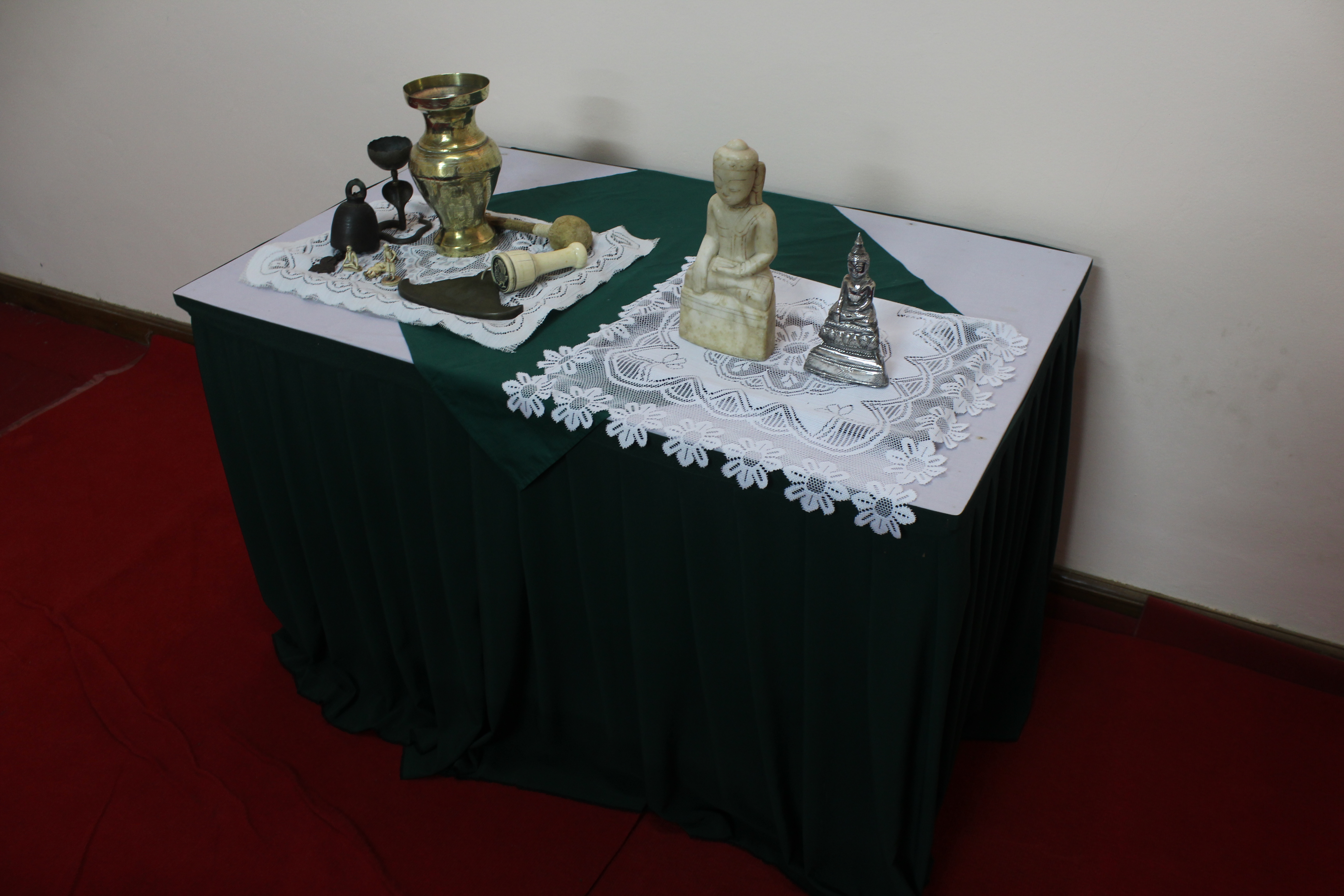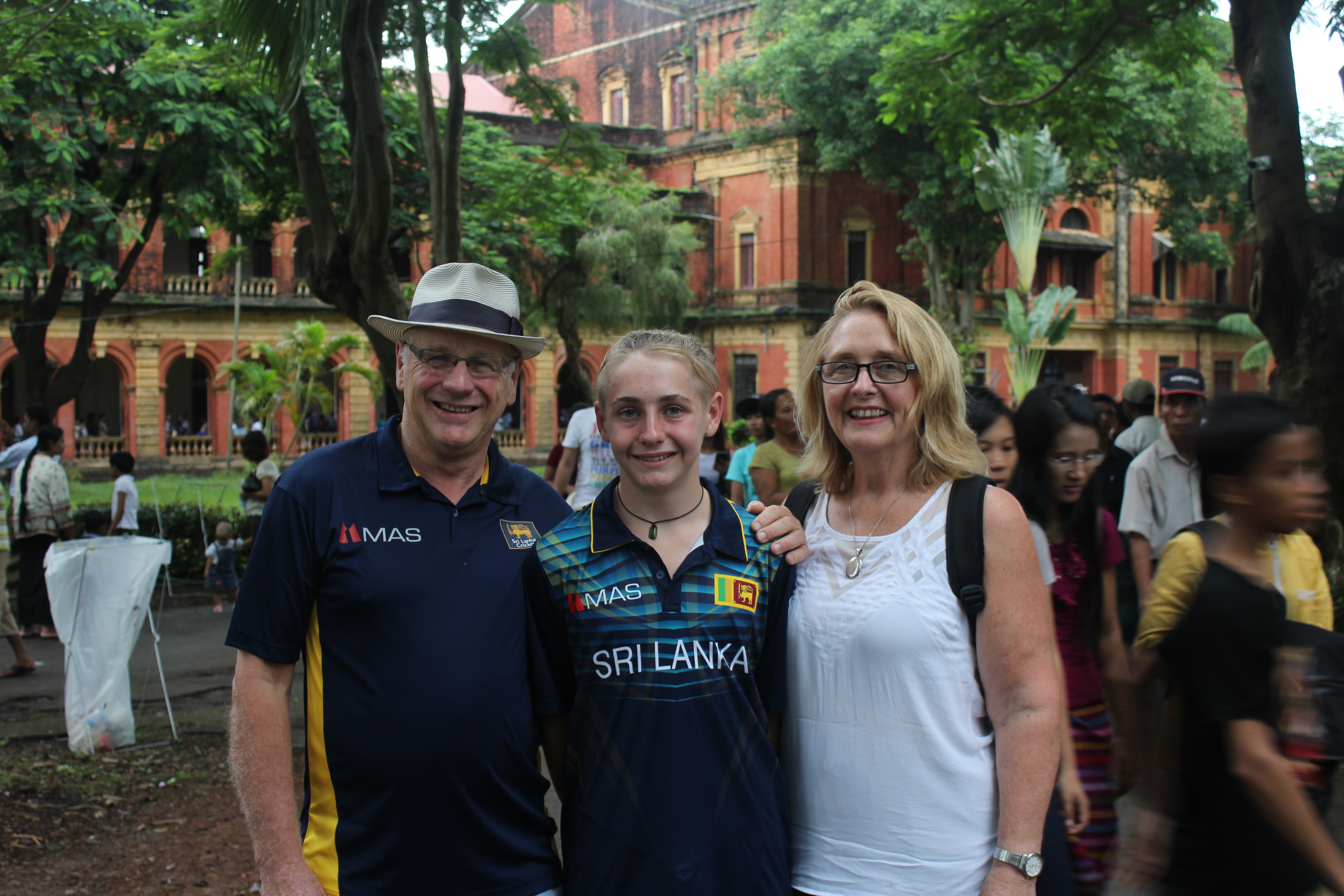An unlikely group of dignitaries gathered in the depths of Yangon’s cavernous National Museum on Thursday to witness an all-too-rare event – the return of several ancient artifacts by the descendants of the people who stole them 165 years ago.
Seated around a large table in an unadorned conference room were the ambassador from New Zealand, the director of the Yangon Heritage Trust, and the director of Myanmar’s Department of Archaeology, National Museum, and Library.
“This only happens once or twice a year,” said department director Daw Ohnmar Aung.
This month, then, has been exceptional. On July 7, the government of Norway returned a 200-year-old Buddha statue that was stolen in 2011 to the Myanmar government, honoring the 1970 UNESCO convention against the illegal transfer of cultural items.
Less than two weeks later, three members of the Bodle family were sitting among the dignitaries, intent on repeating the favor, even though the artifacts they sought to return were removed from Myanmar over a century before the convention was signed.
Slavers and conquerors
For years, Auckland lawyers Gareth Bodle and Jennifer George and their son Darroch were the custodians of a trove of artifacts that were taken from Bago’s Shwemawdaw Pagoda – the tallest pagoda in Myanmar – when the city was sacked by British troops in 1852.
The trove included a large marble Buddha statue, a small silver Buddha statue, a brass vase, a candle holder shaped like a serpent, a gong and striker, a little bell, an ivory seal, and three tiny ivory figurines. They were arranged neatly at the head of the table on two large trays.

The items had spent the better part of the past two centuries in New Zealand, adorning the mantelpieces of the children, grandchildren, and great-grandchildren of the soldiers who made Lower Burma a British colony.
A day after Martyr’s Day in independent Myanmar, the great-great-grandson of one of those soldiers was bringing the pilfered items home.
“These things that were taken probably belong back here. There’s a kind of karma or moral belonging here,” Gareth told Coconuts, explaining why he decided to officially hand over the artifacts to the Myanmar government.
The treasures had been in Gareth’s family for generations, though the family knew little about them other than that they had come from the “pagoda at Pegu.” Gareth’s unique fascination with his family history, including his ancestors’ role in expanding the British Empire, laid the foundation for his decision to return them.
“On the 17th of November [1852] was the main assault on Bago. That was the one that Captain Donald Darroch took part in, and upon taking the pagoda, they took their souvenirs,” Gareth recounted at the handover ceremony, referencing his great-great-grandfather’s military record. That great-great-grandfather would later go on to participate in the storming of Rangoon.
“[My relatives] don’t know a lot about [this history],” Gareth said. “Yet here we are, in a place where our forefathers have walked and lived. Our journey has been wondering about the relevance and significance of all these items to us, and then starting to think about them in context and what they might mean to Myanmar today.”

Gareth’s sense of duty to make amends for his family’s role in the British colonial enterprise goes even further back than the Anglo-Burmese Wars. Following the failure of the Scottish Jacobite Uprising against England in 1715, Gareth’s even earlier ancestor, Duncan Darroch, fled Scotland rather than face the gallows for his role in the rebellion. He ended up in Jamaica, where he made a fortune in the slave trade.
“I find this part of our history uncomfortable,” Gareth said.
That ill-gotten fortune allowed Duncan Darroch to buy land and a baronetcy back in Scotland, along with commissions in the British military for his children. One of those children was Captain Donald Darroch, who helped conquer Burma.
“For a nation that has always had such a fair sense of justice about it, for so many Scotsmen to end up as plantation owners and slave traders in the Indies doesn’t sit well with a Scot’s sense of fairness,” Gareth said.
“I’d like to learn more about it, but I don’t think I’ll find anything that gives it any justification,” he added.
Restorative justice
Years of pondering this complex family history led Gareth to see the pagoda artifacts in a different light from the other heirlooms in his family, such as a Japanese writing desk his great-great-grandmother bought or the medals his great-great-grandfathers won as they roamed an empire that once occupied nearly 24 percent of the world’s landmass.
“They earned those, whereas these [pagoda artifacts] weren’t earned. They were basically stolen. So they deserve to come back,” Gareth said.

The immediate impetus to return the items came from his partner Jennifer. As the two were admiring the items one day three years ago, Jennifer said: “Don’t you think it’s time these things go back?”
Jennifer said her comment came from her desire to see “restorative justice” in the world.
She told Coconuts: “In New Zealand, with our indigenous people, there’s been a lot of work around restoring relationships, and that’s become really important to us. We understand there’s a mutual value to restoration. We might not understand, necessarily, as Europeans, how important it is.”
New Zealand’s ambassador to Myanmar, Steve Marshall, echoed these sentiments in his comments at Thursday’s handover ceremony: “In New Zealand, we have seen over the years a growing recognition of the value of our cultural and spiritual heritages. This applies to all of our ethnicities, and in particular, to our Maori indigenous people.
“During the colonial days, many objects of art with cultural and spiritual meaning were removed from their rightful place and often taken out of the country. This was and is seen as leaving a gap – a part of them and their heritage is missing. As the result, a movement has developed to seek the return of those personal and national treasures so that they can go back to their rightful place in society.”
The Bodle family, he said, is part of that movement.



